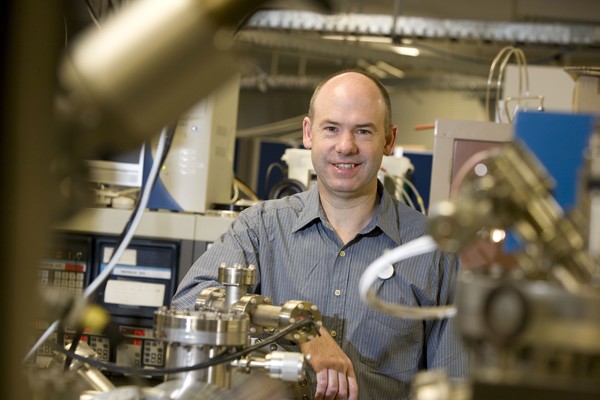Grant to help commercialise zinc oxide research breakthrough

UC academics have come up with a breakthrough zinc oxide technology that has been recognised with a special $400,000 grant through the MacDiarmid Institute.
Zinc oxide is an inorganic compound that is found in everyday items such as sun block, skin creams and breakfast cereal. The MacDiarmid Institute has awarded the grant to develop commercially viable electronic devices based on this material.
Associate Professor Steven Durbin, Dr Martin Allen, Professor Richard Blaikie (Electrical and Computer Engineering) and Professor Roger Reeves (Physics and Astronomy) are all involved in looking at the unique properties of zinc oxide and exploiting them in new semiconductor devices.
“Zinc oxide is a hot research material with lots of worldwide interest,” said Dr Allen. “It’s a cheap, biologically friendly compound which is capable of operating at much higher temperatures than silicon and also in radiation harsh environments. The funding will leverage recent Canterbury-led advances in the fabrication of robust, high performing contacts to oxide semiconductors.”
The breakthrough, said Dr Allen, has been to develop very high quality Schottky contacts (which allow electrons to only travel in one direction) to zinc oxide, something which has eluded researchers since they were first discovered in the 1930s.
“This is a world leading development and could have the potential to deliver a number of ground breaking devices in the ultra-violet (UV) part of the electromagnetic spectrum.
“It is a classic case of a pure research breakthrough that leads to commercial opportunities.”
The funding will be used to employ a dedicated research engineer who will work full-time to progress the commercialisation of zinc oxide based devices.
“Without this support from the MacDiarmid Institute, we’d be stuck with a really good commercial idea, but insufficient time and resources to see it through.”
Dr Allen and the team intend to follow-up on two device opportunities. The first is a quadrant detector, a critical high value component of electron microscopes and x-ray sources. The second is an erythemal UV detector that mimics the response of human skin to sun burning radiation for public health and education applications.
“The funding is very exciting,” said Dr Allen. “Zinc oxide itself is a fascinating material which doesn’t seem to play by the same rules as conventional semiconductors and this funding is the icing on the cake. It’s brilliant to be involved in pure research that ends up having a human benefit.”
Dr Allen has also been working with researchers at NIWA and the Otago and Auckland schools of medicine to monitor the ultraviolet radiation exposure of the general public, and in particular school children, with an interactive electronic sensor that can be pinned on to clothing.
“This is great for school children as they can actually see for themselves the levels of sun burning UV radiation at the various times of the day. They can research the issue for themselves rather than just being told what to do by a teacher.
“The current erythemal UV detectors on the market are expensive but with the zinc oxide breakthrough we may be able to significantly reduce the costs of monitoring human UV exposure. There is also the potential to tune the properties of zinc oxide to detect ‘vitamin D weighted’ exposure as well.
“This project involves high-value semiconductor processing which has a low environmental impact and the key manufacturing steps can be done right here in New Zealand. Who knows - it may even lead to the creation of a New Zealand-based semiconductor industry but without the MacDiarmid funding it would just stay on the lab bench.”
